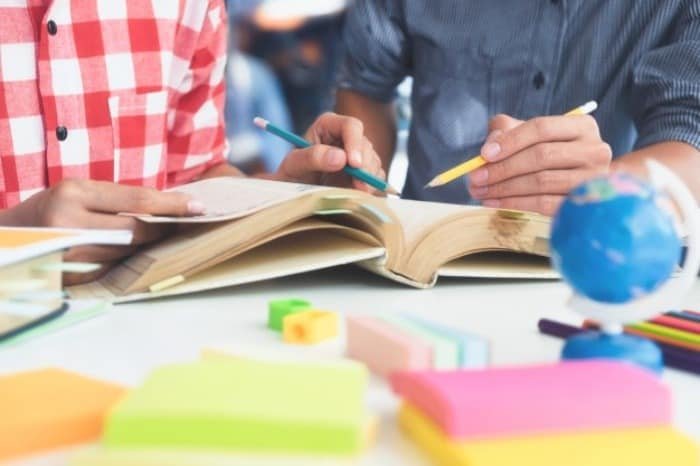Methods to Remember Your Lessons
For a long time, teachers have known that rote memorization can lead to superficial understanding and forgetfulness. However, recent neuroscience studies are introducing strategies that help students remember their lessons better. If you haven’t grasped the foundational concepts, even if you memorize new material, there is still a high chance of forgetfulness; for example, in Arabic, without understanding verb conjugation, you cannot form past and present verbs, so it’s wise to learn comprehensive techniques.

What is the Forgetting Curve?
We often think of memory as a library full of books that we can refer to when needed. However, memories are actually more like a spider web, with strands of memories spread across millions of connected neurons. When we learn something new, say when a teacher presents a new lesson, the information is encoded into these neural networks, transforming experience into memory.
Why is it Difficult for Children to Remember Lessons?
In the late 1880s, a prominent psychologist named Hermann created the “Forgetting Curve” to see how much people forget without reinforcement, discovering that students forget about 56% of what they learn within an hour, 66% within a day, and 75% within six days. In June 2017, neuroscientists explained in a paper that without using strategies to retain knowledge, the brain forgets information deemed non-essential. This represents a significant issue and highlights the importance of teaching strategies to students for retaining what they learn.
Strategies to Enhance Learning
Researchers suggest that helping students memorize lessons involves using strategies that aid in forming synaptic connections and linking new lessons to existing memories to create a connected network. Each connection acts as a strand in the web, and the more strands, the stronger the network. Another strategy is to ensure students regularly access their lessons so they don’t simply fade away. Here are methods teachers and parents can use to reinforce and retain learning.
Regularly quiz students:
When students take non-graded tests or quizzes, they can review material in a low-stress environment.Stresscan disrupt memory.
Combine visual and verbal lessons:
Using multiple senses aids memory. Showing images while teaching verbally helps students better understand the material.
Encourage students to remember information:
Help students enhance their memory by recalling colors of the rainbow (red, orange, yellow, green, blue, purple) to remember math operations (multiplication, division, addition, subtraction). Singing can also be a helpful way to memorize information.
Encourage discussions and group learning:
Group discussions naturally help students remember information, as seeing classmates triggers memories of previous lessons.

Utilize constructive feedback on assignments or tests:
Every piece of feedback creates another synaptic connection, strengthening memory networks to represent specific concepts or truths.
Encourage students to review what they’ve learned before sleeping:
Research shows that information flows in the mind during sleep, aiding retention.
Utilize spaced repetition:
Research indicates that reviewing material just before it is forgottenincreases memory retention.A better approach is to teach the lesson to yourself, then review it at regular intervals in the future.
Ways for Students to Remember Academic Material
We have outlined methods that teachers and parents can use to reinforce and retain learning. Below are strategies that students can use to learn better.
Pay attention to prerequisite resources:
To learn new material, a student must understand the foundational work. Without mastering prior material, they won’t grasp the next topic, so try to address gaps in previous lessons before moving forward.

Preview the new lesson:
Before the teacher begins instruction, preview the new lesson to have a mental framework for understanding the upcoming material.
Learn course material in class:
By actively participating in lessons, you can ask your teacher about unclear topics right there in class.
Practice solving problems:
By tackling numerous exercises, you can fill gaps in your knowledge and learn lessons more effectively.
Review:
One effective method mentioned previously inSelMagzis reviewing: to keep information in your mind, review what you’ve learned every night. If you’ve learned something, review it one day later, ten days later, one month later, and four months later so it can be consolidated in your memory for a year.
Teach yourself newly learned material:
In a fun way, teach what you’ve recently learned to your imaginary students.
Maintain full concentration:
While learning, stay fully focused and remove distractions that disrupt your concentration.
Discover your learning style:
Learning methods vary; visual learners learn best through seeing and observing. Auditory learners better comprehend by listening. Kinesthetic learners grasp material through touching objects and engaging in hands-on activities.
Use mnemonic devices:
To prevent forgetfulness, employ mnemonic techniques. They are simple and effective strategies to minimize memory loss.
Take notes:
During study sessions, take paper and pen, noting down the material you read. These notes will help you remember the content.

Organize your notes:
For visual learners, it’s best to categorize notes into different groups and use various colors for different topics so the brain can more easily process the information.
Record your voice:
To quickly memorize class content, read aloud what you’ve learned and record your voice. Then listen to the recording. This method is helpful for auditory learners.







